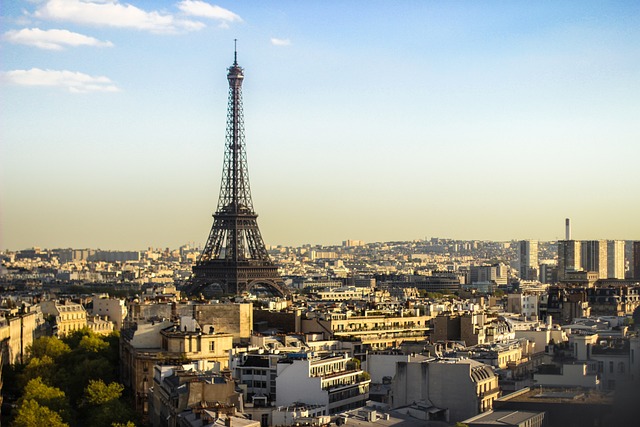The Art of Curatorship: Behind-the-Scenes of a Tour Museum
Curatorship is a multifaceted discipline that encapsulates the delicate balance of art, history, and education. The role of a curator in a museum is not simply to organize exhibits; it involves a deep understanding of the artifacts, the narratives behind them, and the audience’s needs. This article aims to delve into the intricacies of curatorship, exploring the behind-the-scenes processes that contribute to the exhibition experience at a tour museum.
Understanding Curatorship
At its core, curatorship is an art form. It requires creativity and vision to present artifacts in a way that tells stories and evokes emotion. A successful curator must think critically, conducting extensive research to understand the context of the pieces they are responsible for. This involves examining historical documentation, studying the provenance of artifacts, and understanding the thematic connections between pieces.
The curator’s role has evolved significantly over the years, transitioning from simply being a caretaker of collections to becoming an active participant in cultural dialogue. Today, curators are tasked with creating narratives that resonate with diverse audiences, fostering engagement and providing educational insights into the collections.
The Lifecycle of an Exhibition
Creating an exhibition is a comprehensive process that can often take months or even years. It begins with the conceptualization of an idea, which can be inspired by various sources, including significant anniversaries, current events, or trends in academia and art. The spawning of an idea typically leads to research, where curators explore the available artifacts that could be included in the exhibition.
Once the research phase begins, curators compile initial lists of potential pieces, seeking various perspectives on the underlying themes. This collaborative phase often involves discussions with other experts, including historians, educators, conservators, and designers, to ensure that the chosen artifacts will both inform and captivate visitors.
Artifact Selection and Research
Artifact selection is perhaps one of the most critical components of curatorship. Curators must not only evaluate the historical significance of each piece but also consider how each artifact will fit into the overall narrative of the exhibition. This involves careful analysis of the artifacts’ conditions, their relevance to the theme, and their aesthetic appeal.
Moreover, provenance—the history of ownership of an artifact—plays a vital role. Curators need to ensure that the items can be legally obtained and displayed. They delve into archives, databases, and collections to verify the history of each piece, confirming its authenticity and ethical considerations. This process can be labor-intensive but is essential for the credibility of the exhibition.
Designing the Exhibition Space
Once a collection of artifacts has been assembled, the next phase involves designing the exhibition space. Curators work closely with exhibition designers to create a layout that enhances the narrative flow and engagement of the audience. The arrangement of artifacts is crucial; it can dictate how a visitor interacts with the exhibition and the stories being told.
Lighting, colors, signage, and multimedia components all play a role in the viewer’s experience. Curators must consider how light affects the visibility and preservation of artifacts, which can dictate everything from display illumination to the duration of exposure for sensitive items. Color schemes and visual aesthetics provide an atmospheric context that frames the artifacts within the intended narrative.
Engaging the Audience
One of the primary functions of a curator is to engage the audience. This is achieved through various methods, including interpretive panels, guided tours, and interactive installations. Curators need to anticipate the questions that audiences may have and provide information that is both accessible and insightful. They focus on telling compelling stories while integrating visual art and contextual history.
Educational programming accompanies exhibitions to foster a deeper understanding. Curators often organize lecture series, workshops, and panel discussions, inviting scholars, artists, and community members to contribute their perspectives. These programs can create a rich dialogue around the exhibition, making it more than just a display of artifacts but a platform for conversation and reflection.
Conservation and Preservation
A crucial aspect of curatorship is the conservation and preservation of artifacts. Curators must work alongside conservators to ensure that items are maintained in optimal conditions. This involves monitoring environmental factors such as humidity, temperature, and light exposure. Curators are also involved in determining the methods of display that minimize wear and damage over time.
Regular assessments and preventive conservation strategies are part of a curator’s responsibility. They must ensure that all artifacts are properly documented, allowing for future reference regarding their condition, provenance, and exhibition history. This meticulous attention to detail not only protects cultural heritage but also enhances the educational aspects of the exhibition.
The Role of Technology
In recent years, technology has begun to play an integral role in curatorship. The rise of digital archiving and interactive exhibits has transformed how audiences engage with museums. Curators now utilize various technologies to enhance storytelling, allowing for virtual tours, augmented reality experiences, and interactive displays that help demystify complex ideas.
Online platforms have also become essential for museums to broaden their reach. Digital marketing, social media, and virtual exhibitions allow curators to engage with audiences far beyond the physical walls of the museum. By leveraging technology, curators can create inclusive experiences that cater to various learning styles and demographics.
The Future of Curatorship
As society continues to evolve, so too will the role of curators. The emergence of multiculturalism and the growing demand for representation will influence how exhibitions are curated moving forward. Curators recognize the importance of diverse voices and narratives, aiming to create spaces that are inclusive and reflective of societal complexities.
Furthermore, sustainability has become a critical discussion in the museum sector. Curators are increasingly seeking ways to minimize waste and promote eco-friendly practices within exhibitions. This commitment to sustainability not only demonstrates social responsibility but also connects with audiences who share these values.
Conclusion
The art of curatorship is about weaving narratives that transcend time and culture. It is an intricate dance of research, design, and community engagement. Behind every exhibition is a team of passionate individuals dedicated to preserving and sharing the past while igniting curiosity for the future. In the journey through a tour museum, curators work tirelessly to ensure that each artifact tells its story, contributing to the rich tapestry of human experience.
As we look to the future, the evolving nature of curatorship will continue to engage, educate, and inspire, ensuring that the stories of our shared humanity remain alive for generations to come.


